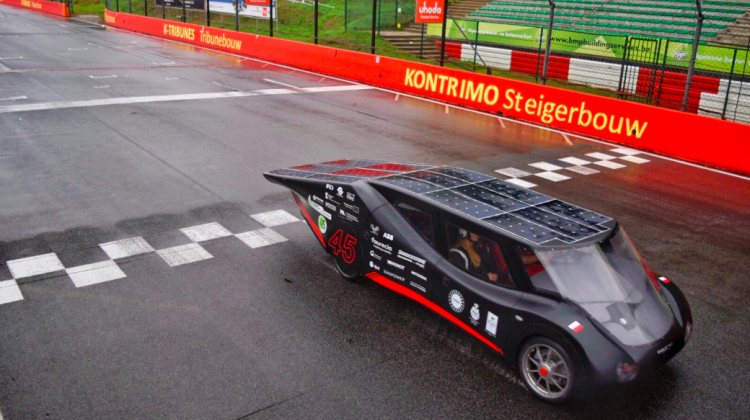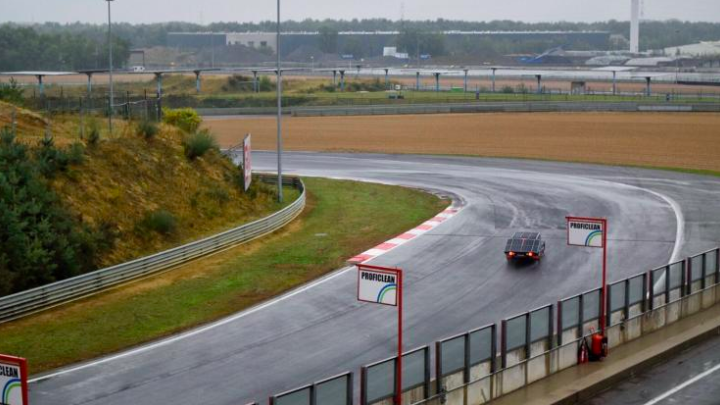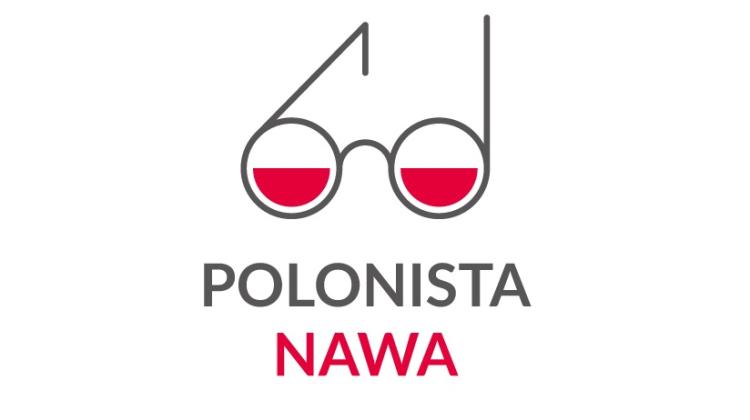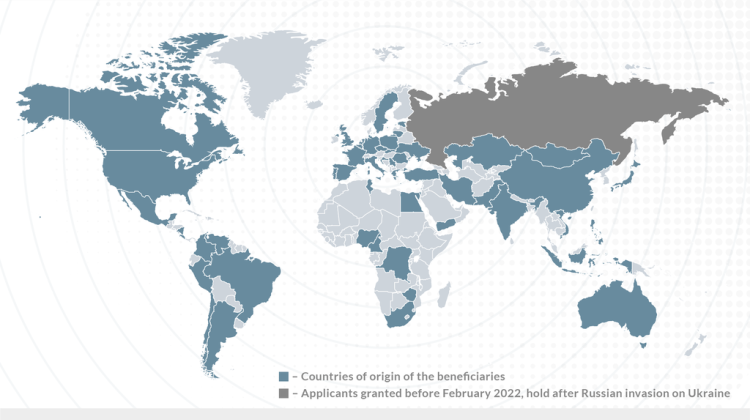Solar vehicle built by Lodz University of Technology students wins a 24-hour race in Belgium
 Source: Lodz University of Technology
Source: Lodz University of Technology
Lodz Solar Team from Lodz University of Technology won the urban vehicles category in the 24-hour international race of electric vehicles powered by solar energy - iLumen European Solar Challenge. The competition took place on September 22-23 at the Circuit Zolder in Belgium.
The Polish team competed with their vehicle Eagle Two in the Cruiser class for urban vehicles. It was their debut in this type of competition. In spite of continuous rainfall and slippery surface, the Polish car proved to be reliable and completed 193 laps with a crew of four. Ultimately, the Lodz Solar Team won the race in their category, scoring 68 points and beating the next team in the classification by 17 points, reported the university spokeswoman Ewa Chojnacka.
iLumen European Solar Challenge is the largest international racetrack race for solar-powered electric vehicles. In this year`s 5th edition, participants competed in two categories - Challenger and Cruiser. The Challenger category is for one-man racing cars, and the Cruiser category is for urban vehicles that must have room for a minimum of two people. In total, there were more than 20 vehicles from around the world at the start, seven in the urban vehicles category.
Polish Eagle Two has place for five people; during the race there were four people in the car. The vehicle is equipped with 5 sq m of photovoltaic panels, a 14.5 kWh battery and 2 BLDC motors with a capacity of 5kW each. The vehicle structure is made mostly of carbon fibre and its total weight is 380 kg.
The race was preceded by technical tests of vehicles that included checking the documentation, battery and charging, visibility and lights. Before entering the track, the teams also had to complete the braking and turning radius tests.
The most important part of the Cruiser class competition was completing as many laps as possible with the largest number of people in the car. The students from Łódź managed to complete 193 laps with the crew of four. According to the students, the first minutes after the start showed that it would not be an easy race. Due to heavy rainfall and slippery asphalt, several teams landed off the track on the first lap. The organizers ordered changing tires to ones adapted to wet conditions. Driving at night brought even more excitement. Water accumulating on the windshield significantly limited visibility, and curves could only be recognized by the lateral lines of the track. During the 24 hour drive, the Polish car was charged only twice, it was the only car that did not need a tow truck, and the crew in the car was replaced every two hours.
According to the regulations, points for additional competitions were added to the total score. The first of them was the chicane test, which the teams had to complete in the shortest possible time. Another test checked the even driving speed based on eight laps.
In addition, the teams had to present innovative technical solutions introduced in the project. The team from Lodz University of Technology prepared two augmented reality applications. The first app uses special HoloLens glasses and enables the user to view a life-size computer model of the car in the surrounding reality. Another application allows to display vehicle parameters in real time.
The Polish team also designed a system for uploading data from the car to the cloud. The data are accessible on any device anywhere in the world, and a special interface allows to read them quickly. An important part was the safety test, which verified the preparation and organization of the team. The team from Łódź had the highest score among all teams.
Lodz Solar Team is a project of students operating within the Motor Fans Student Club at the Institute of Turbomachinery, Faculty of Mechanical Engineering, Lodz University of Technology. Students have been working on solar-powered vehicles for four years. In 2015, they debuted in the Bridgestone World Solar Challenge in Australia with the first Polish car of this type, Eagle One.
PAP - Science in Poland
szu/ agt/ kap/
tr. RL
Przed dodaniem komentarza prosimy o zapoznanie z Regulaminem forum serwisu Nauka w Polsce.
















